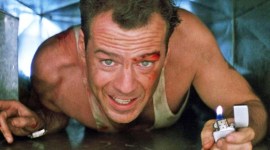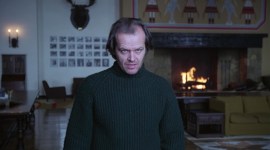
Is Greig Fraser The New Roger Deakins?
We all know Deakins is the best, but has Greig Fraser quietly become the next most inspirational cinematographer in the business?
Okay, okay, hot take alert! Recently, there’s been a bit of discussion on Twitter debating whether Greig Fraser’s cinematography now deserves to be in the same breath as Roger Deakins.
And, before anyone comes in with any outrage, keep in mind that while this is, of course, just an objective discussion, no one actually suggests that Fraser has surpassed Deakins legacy.
Now, with that huge caveat being said, we can at least entertain the notion that Greig Fraser, fresh off the universal acclaim for his cinematography work on Dune: Part One, Rogue One: A Star Wars Story, and The Batman, has become one of the most in-demand directors of photography in the business.
This certainly puts him in the conversation, along with names like Roger Deakins, Emmanuel Lubezki, Reed Morano, and Matthew Libatique, when DPs are discussed by the producers of the biggest films of our day.
But, for all of us aspiring filmmakers and cinematographers, how do we feel about Greig Fraser’s ascent and how his work stacks up to the masters?
And, even more importantly, what can we learn and take inspiration from Fraser’s new cinematography styles and trends?
Who Is Greig Fraser?
Getting his feature starts with the 2005 drama film Jewboy, Greg Fraser was far from a household name until well into the 2010s. However, for those who worked with Fraser, or saw his early films, I can tell you, the young Australian quickly established himself as a provocateur behind the camera, lensing some true indie standouts to start his career including films like Bright Star, Let Me In, and Killing Them Softly.
However, once he was given his opportunities to partner with some more prominent name directors on some bigger budget projects, Fraser was able to shine as he showed off his innovative cinematographic instincts and began to develop some of his signature looks and styles on grittier, yet more spectacular, films like Zero Dark Thirty, Lion, and Rogue One.
In particular, the accolades Fraser earned for Garth Davis’ Australian biographical drama film Lion, including an AACTA Award for Best Cinematography. Fraser has been trusted to hold the keys for some of the biggest blockbuster franchises currently running by partnering with Denis Villeneuve on Dune and Matt Reeves (whom he has worked with before) on The Batman.
The Cinematography of The Batman
And, since it’s his latest film, as one so notable for its visceral and challenging visuals, which are somehow even darker, grittier, and more polarizing than the previous dark Batman films from Christopher Nolan, Fraser’s work behind the camera on The Batman is drawing all sorts of praise.
While the acting and soundtrack have, of course, been highlighted by many critics, the general consensus from fans and critics alike is that the cinematography of The Batman might be the best (if not the most heavily discussed) of the entire historic franchise.
And, along with Dune’s acclaim and success, that’s probably the impetus for many Twitter users suddenly having stark opinions about how Fraser’s cinematic legacy is already being cemented—despite having less than two decades of feature film experience to his name.
Roger Deakins Cinematography Legacy
Now, moving on to Roger Deakins.
And, for the record, I want it to be known that I’m not one of those arguing that Fraser is at Deakins’ level of extraordinary cinematography. (But, I am one who recognizes that Fraser’s recent success has put his name in the same current conversation.)
What do we have left to say about the great Roger Deakins and his cinematographic legacy? The Shawshank Redemption, Fargo, Skyfall, 1917—we could fill an entire novel on our favorite films and scenes shot by this cinematography master.
The man has his own stylistic look and even the “Deakinizer” tilt-shift effect named after him. In contrast, we’ve indeed spent our fair amount of time breaking down his cinematography as a way for others to learn and develop their craft.
So, as far as accolades go, until Greig Fraser gets knighted for his DP work, he’s still got a long way to go.
Comparing Their Cinematography Styles
But, the question remains: How do these two cinematography titans stack up in terms of approaches and styles?
Surprisingly to some, they’re quite similar in many ways. They have a knack for finding that perfect combination between big, scene-setting wide shots, yet still able to come in tight by painting intimate closeups of real characters with real emotions.
And, despite them coming up in entirely different decades, they’ve begun to embrace many of the new digital technologies available to cinematographers, including new techniques for real-time virtual sets and complex digital-to-film-to-digital transfers to help bridge the old analog world with the new.
Still, while they might share a similar shot or two from time to time (that might make for an interesting discussion on Twitter), you’d be hard-pressed to watch a Deakins film and walk away thinking it was a Fraser project—and vice versa.
The real question should be: How are you carving out your own cinematic path?
Carving Your Own Cinematic Path
This is the fascinating point in any of these discussions about this cinematographer versus that cinematographer or this director versus that director. All anyone is doing in these Twitter debates is trying to self-synthesize what styles and looks they prefer over others.
And, if you can make those types of decisions from your keyboard, you can also make those decisions when framing, directing, or editing your projects.
So, to help you on your journey to becoming the next notable cinematographer, here are some excellent articles and resources to guide you:
- Denis Villeneuve and Clever Workarounds Filmmakers Use on Set
- The Power of Movement: The Best Gimbals for a Small Budget
- Break Genre Rules Like a Master Filmmaker
- Virtual Production: How It Will Affect You
- The Secrets of Peacemaker’s Storytelling Success
Cover image via Warner Bros.





